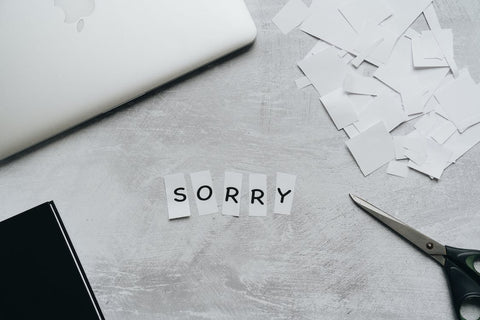Champagne and sparkling wine are two names for the same thing. It's a type of wine that has carbon dioxide bubbles in it, and it's made by trapping those bubbles in a bottle. But there are some key differences between champagne and sparkling wine that you should know about when buying the perfect bottle for your next party or celebration.

Champagne vs Sparkling Wine: What's the Difference?
In this post we'll look at what distinguishes champagne from other types of sparkling wine—and why they're both so delicious!
Champagne is just one type of sparkling wine.
Champagne is a type of sparkling wine made in the Champagne region of France. It's also more expensive than other sparkling wines.
Both are made by trapping bubbles in a bottle of fermenting grape juice.
Both sparkling wine and champagne are produced by trapping carbon dioxide gas in a bottle of fermenting grape juice. Carbon dioxide is produced when yeast metabolises sugar, so the first step in making either beverage is to add yeast to the grape juice, which can be done in two ways:
-
After pressing grapes into "must," which is essentially unfermented juice made up of grape skins, seeds and stems—but before fermentation begins. The must is then turned into wine using an alcoholic fermentation process similar to that used for beer making; it's allowed to sit until the sugar has been converted into alcohol. (This happens quicker if you add more yeast.) At this point you have a basic white or red wine that needs bubbles! This type of method may produce less carbonation than other methods do because there isn't any added sugar during fermentation; however, it does allow for greater flexibility when blending different wines together or adding flavours like oak chips (which give off vanilla notes) or fruit essences (think raspberry). If you want something sweet but bubbly try sparkling moscato from Italy! Or maybe something crisp from France with bubbles? You get my drift here... It all depends on what suits your taste buds best!
Where do the bubbles come from?
-
Bubbles are produced by the fermentation of sugar. During the fermentation process, carbon dioxide is produced and trapped in the wine.
-
When you open a bottle of sparkling wine, this pressure is released through tiny holes in the cork called "cavities." As you pour your glass, some of these bubbles will also be released from within each drop as it pours out.
The most important distinction between them is geography.
The most important distinction between them is geography. Champagne has been made in the Champagne region of France since the Middle Ages, with some of its best producers using centuries-old techniques for crafting their sparkling wine that cannot be replicated anywhere else. Sparkling wines made in other parts of the world can be excellent, but they are not technically champagne because they lack this history and tradition.
Sparkling wines can also differ from each other by grape variety or method used to create bubbles (traditional or non-traditional).
The other important difference is that champagne is made in a specific process called méthode champenoise, which requires additional ageing and manipulation.
The other important difference is that champagne is made in a specific process called méthode champenoise, which requires additional ageing and manipulation. In order to be considered “champagne,” the wine must undergo three steps: first, it's fermented into base wine; then the yeast cells are removed; finally, it's blended with a small amount of still wine and aged for at least 15 months on lees (yeast sediment). This process takes place in the Champagne region of France but can be replicated elsewhere—it just won't be called champagne because it won't have been produced under those conditions.
Types of Sparkling Wine
Champagne is just one type of sparkling wine. Really, it's only the most famous type. In fact, there are four main types of sparkling wines:
- Champagne (méthode champenoise)
- Cava (similar to méthode champenoise)
- Prosecco (like cava but from Italy)
- Brut
Champagne Vs Sparkling Wine: 5 Key Differences
-
Location. The majority of sparkling wines are made in the Champagne region of France. However, there are also producers in other areas of Europe as well as the United States and Australia.
-
Grape Varieties. Sparkling wines are made from grapes like Chardonnay, Pinot Noir, or Pinot Meunier but don’t necessarily have to be made from one type of grape alone; it all depends on the winemaker's preferences and how they want their finished product to taste. Champagne must be made from at least 70% Chardonnay grapes however and many other sparkling wines are composed entirely from this varietal (it's even used for most Cava).
-
Winemaking Methodology. The production process for bubbly wine is slightly different than for non-sparkling varieties--the wine goes through extra fermentation stages so that CO2 bubbles form inside each bottle naturally during ageing and then get released upon opening instead of being added artificially by the winemaker during bottling (this isn't always necessary though). This requires special equipment such as metal cages called "cuvees" which hold bottles upright while allowing CO2 gas out through tiny holes called "coulure points" located near the bottom edge so bubbles don't escape prematurely before reaching the market place."
The word "Champagne" is actually a protected designation of origin and cannot be used outside the Champagne region of France. This means that if you see it on a bottle of wine, it was probably made in another country using grapes from there rather than from the landlocked French region.
Sparkling wines can be just as expensive as champagne.
- Sparkling wines can be just as expensive as champagne.
- Sparkling wines can be made in many different countries, not just France.
- Sparkling wines have their own unique flavour and character that makes them stand out from champagne.

When you give someone a bottle of "champagne", it's nice to know what you're giving them!
When you give someone a bottle of "champagne", it's nice to know what you're giving them!
The difference between Champagne and Sparkling Wine is subtle but important. To understand that difference, we first need to understand the process used to make both types of beverage.
Conclusion
There are many types of sparkling wines, but the two most famous are champagne and sparkling wine. The difference between them is simple: champagne comes from the Champagne region of France, while other sparkling wines don’t. But beyond that, there can be a lot of variation in the taste and quality of each type!




